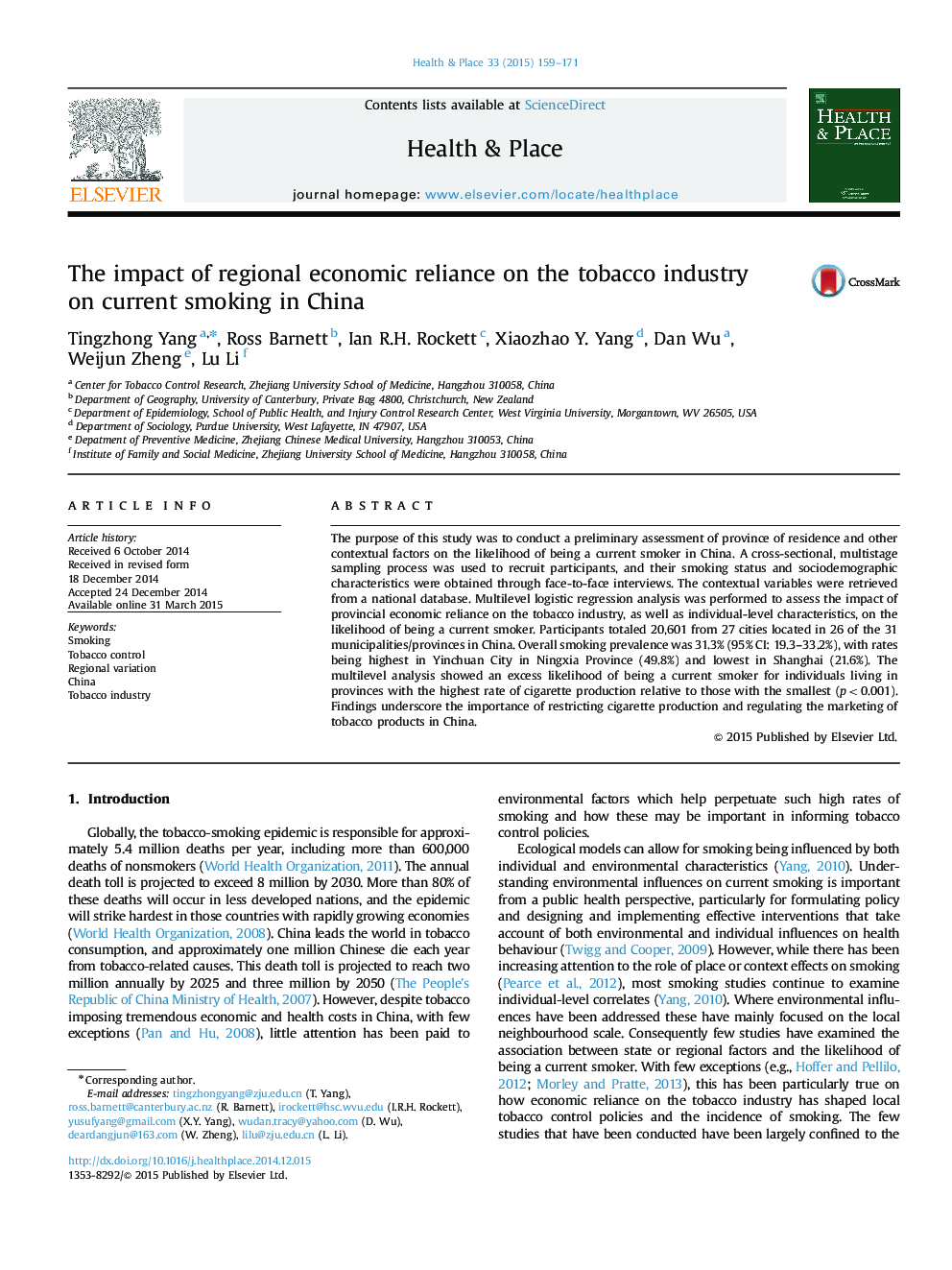| Article ID | Journal | Published Year | Pages | File Type |
|---|---|---|---|---|
| 7458208 | Health & Place | 2015 | 13 Pages |
Abstract
The purpose of this study was to conduct a preliminary assessment of province of residence and other contextual factors on the likelihood of being a current smoker in China. A cross-sectional, multistage sampling process was used to recruit participants, and their smoking status and sociodemographic characteristics were obtained through face-to-face interviews. The contextual variables were retrieved from a national database. Multilevel logistic regression analysis was performed to assess the impact of provincial economic reliance on the tobacco industry, as well as individual-level characteristics, on the likelihood of being a current smoker. Participants totaled 20,601 from 27 cities located in 26 of the 31 municipalities/provinces in China. Overall smoking prevalence was 31.3% (95% CI: 19.3-33.2%), with rates being highest in Yinchuan City in Ningxia Province (49.8%) and lowest in Shanghai (21.6%). The multilevel analysis showed an excess likelihood of being a current smoker for individuals living in provinces with the highest rate of cigarette production relative to those with the smallest (p<0.001). Findings underscore the importance of restricting cigarette production and regulating the marketing of tobacco products in China.
Related Topics
Health Sciences
Medicine and Dentistry
Public Health and Health Policy
Authors
Tingzhong Yang, Ross Barnett, Ian R.H. Rockett, Xiaozhao Y. Yang, Dan Wu, Weijun Zheng, Lu Li,
